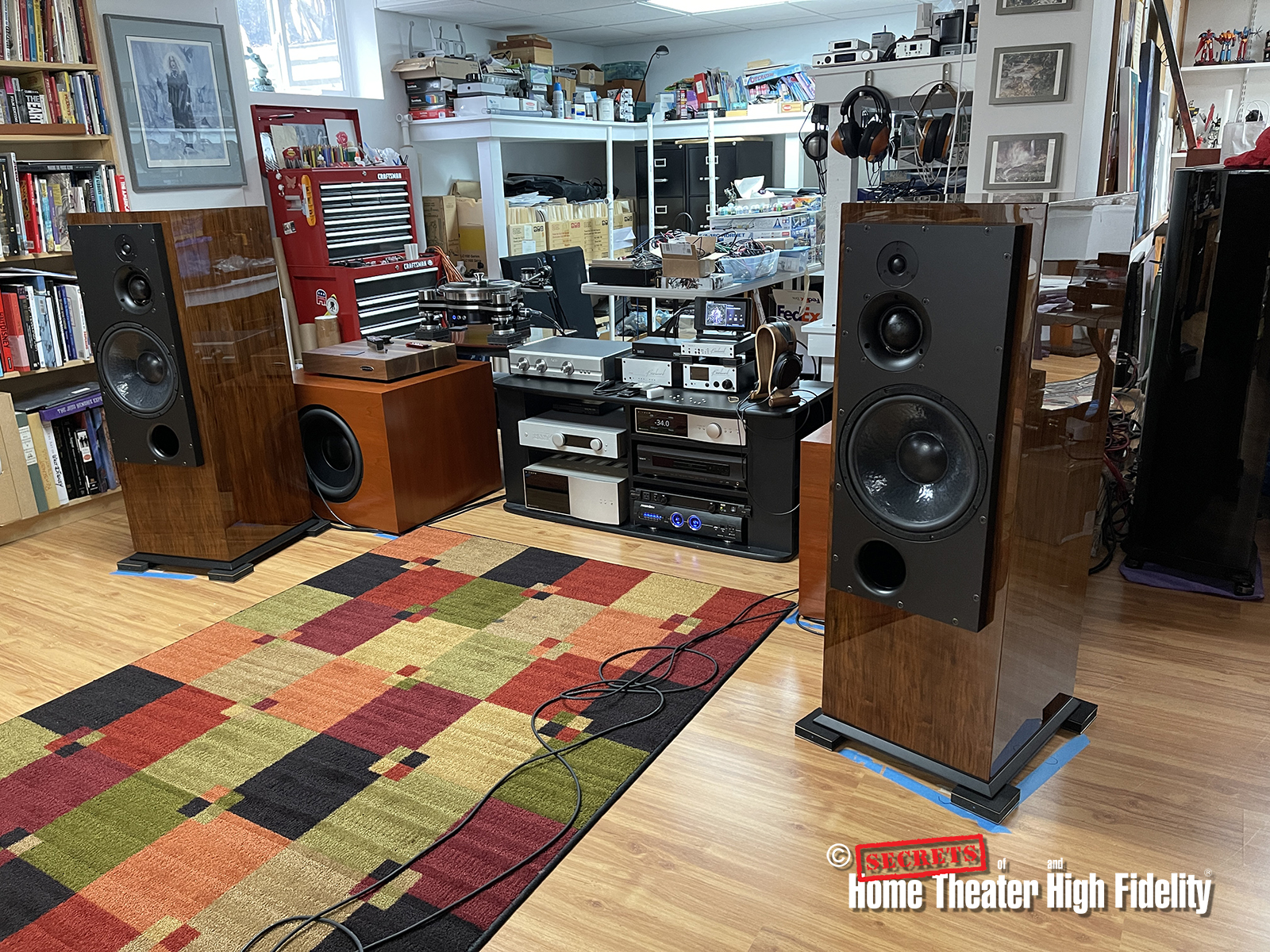
ATC has distilled all that it has learned over its almost 50 years of developing professional loudspeaker drivers, electronics, and monitoring systems into the 3-way SCM100ASLT. Available in both passive and fully active configurations, the active review sample is a relatively simple plug-and-play affair that, while not inexpensive, legitimately brings studio monitoring quality and dynamics into the home.
ATC SCM100ASLT Active Loudspeaker Highlights
- All drivers and electronics are custom designed and manufactured by ATC in-house.
- Each speaker contains three Class A/B amplifiers totaling 350 watts.
- These speakers are capable of explosive dynamics.
- The High-Gloss European Crown Cut Walnut finish of the review samples is exquisite.
- Big and heavy. And these are 4th down from the top of the line!
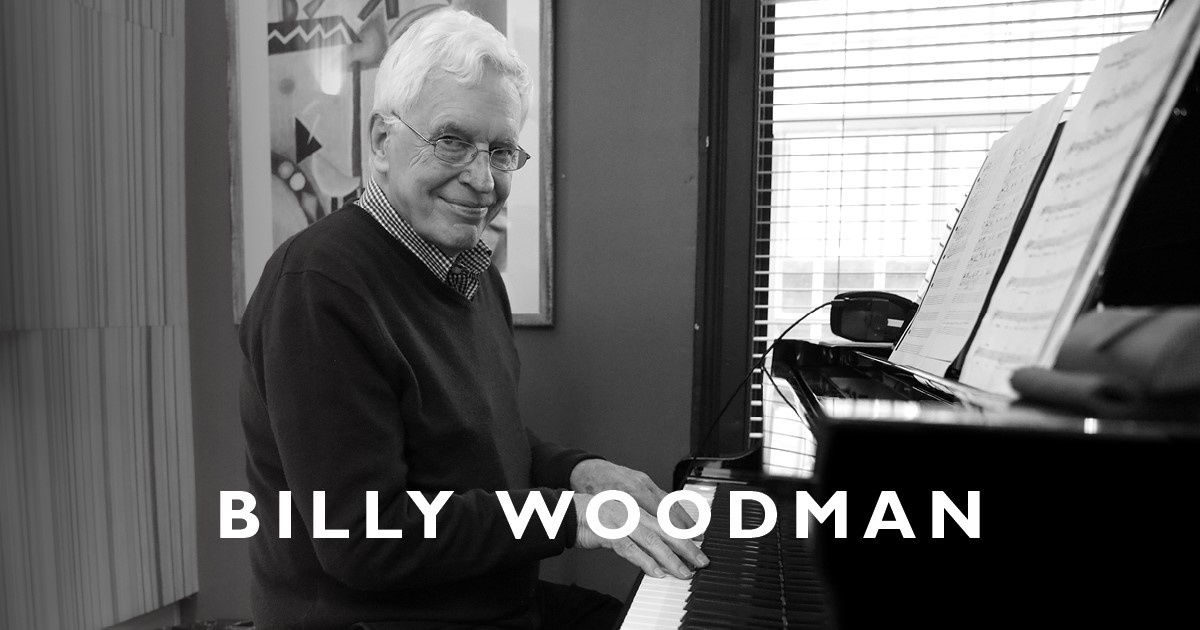
ATC (Acoustic Transducer Company) has been in the specialist audio business since 1974. Originally founded by Billy Woodman, an audio engineer, and accomplished piano player, ATC cut its teeth by making superior-quality drivers for the professional market. Beginning with 12” low distortion bass drivers, the company soon designed and developed their trademark soft dome midrange driver. Its hallmarks being ultra-low distortion, wider bandwidth, and more uniform dispersion, it was an important design innovation, and it has been constantly updated and refined over time.
In the subsequent years, ATC continued expanding its range of drive units which were employed in touring systems for bands of the day, with Supertramp and Pink Floyd’s touring rigs being but two examples. They also began producing complete studio monitoring systems which leads to the development of active speaker systems, and that’s where things really start getting interesting. The benefits of proper active crossover and electronics design mated to superior driver technology became obvious enough that eventually, the company offered active options on several of its consumer speakers when ATC entered that market. Continued driver innovations like the dual suspension tweeter and the material used in their SL series drivers to reduce magnetic hysteresis (similar to what DALI does with their SMC material) find their way into new ATC speaker designs.
Unlike some other companies, ATC legitimately has a history and credibility in the professional audio world in both the production side and in live performances. The ATC SCM100ASLT active speakers that grace my basement studio for this review are direct descendants of professional models currently in the ATC catalog but are a bit more “dressed up” for duty in a home listening environment.

They are big, heavy speakers with a serious driver and amplifier complement and a gorgeous furniture-grade walnut finish that could make an interior designer cry. But beyond that, they convey the intention of being serious instruments for the recreation of music. Essentially, as active speakers, you just need to plug in a preamp or a source with volume control and you are off to the races.
Yes, these are almost $40K/pair speakers (as tested). But they are made by hand by a small, independent manufacturer in Gloucestershire, England. They are one of the few speaker manufacturers that can legitimately claim that they produce every part of their loudspeaker in-house. They have 350 watts worth of Class AB monoblock amplification in each speaker. The active filtering is ideally tuned for each driver, all of which is also designed and made completely by ATC. They are what many studios use to monitor and master music. To top it off, the finish is more luxurious than most home furnishings that you will encounter.
Let’s see what they are like!
Design:
3-way active loudspeaker, bass-reflex.
High-Frequency driver:
1-inch (25mm) Soft Dome Tweeter with Neodymium Magnets.
Midrange driver:
3-inch (75mm) Soft Dome Midrange.
Low-Frequency Driver:
12-inch (314mm) SL Series Woofer.
Frequency Response (±6dB):
32Hz–22kHz.
Amplitude Linearity (±2dB):
65Hz–17kHz.
Max SPL:
115dB.
Crossover Frequencies:
380Hz & 3.5kHz.
Filters:
Active – 4th Order Linkwitz-Riley. Fully analog electronics – No Digital inputs, DSPs, or DACs.
Amplifier Output:
200 watts LF, 100 watts Mid, 50 watts HF (active version).
Input Connectors:
Female XLR.
Accessories Inc. (per pair):
2 x fabric-wrapped grills, 8 x M8 x 1.25mm stand spikes and nuts, 2 x IEC Power Cables.
Cabinet Dimensions (H x W x D):
1070 x 397 x 560mm / 42.13 x 15.63 x 22.05″.
Weight:
8kg (150 lbs.) each.
MSRP:
$30,000.00 to $39,000.00 per pair (depending on finish)
Website:
Company:
SECRETS Tags:
atc, active, loudspeakers, studio, monitors, british hifi

The ATC SCM100ASLT is a large, ported 3-way loudspeaker. Its driver complement starts off with a 25mm (1”) soft dome tweeter with dual suspensions and a large Neodymium magnet structure. The unique use of dual suspensions helps maintain a more linear front-to-back dome travel and helps minimize any side-to-side rocking motions. This helps maintain a lower level of distortion and negates the need to use ferrofluid for cooling and damping. The dual suspension also allows for a smaller magnetic gap which leads to improved power handling.
Secrets Sponsor
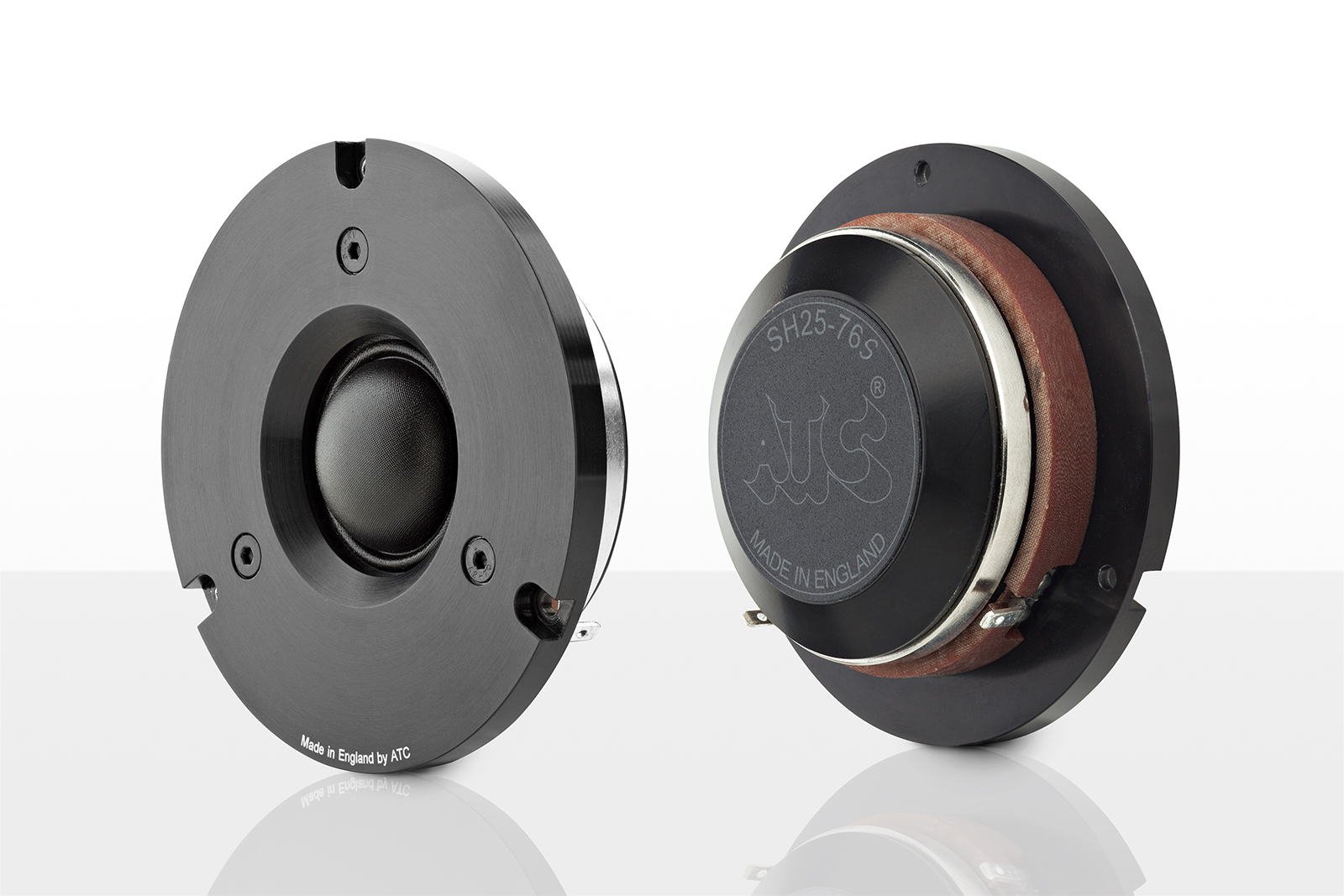
Next is ATC’s trademark 75mm (3”) soft dome midrange driver. It has a specially coated woven fabric dome diaphragm, also using dual suspensions, and is backed by a comparatively enormous magnet system. The entire driver is situated within a waveguide and has a response between 350 Hz to 3.5 kHz. The dual suspension benefits for the tweeter also apply to the midrange dome.
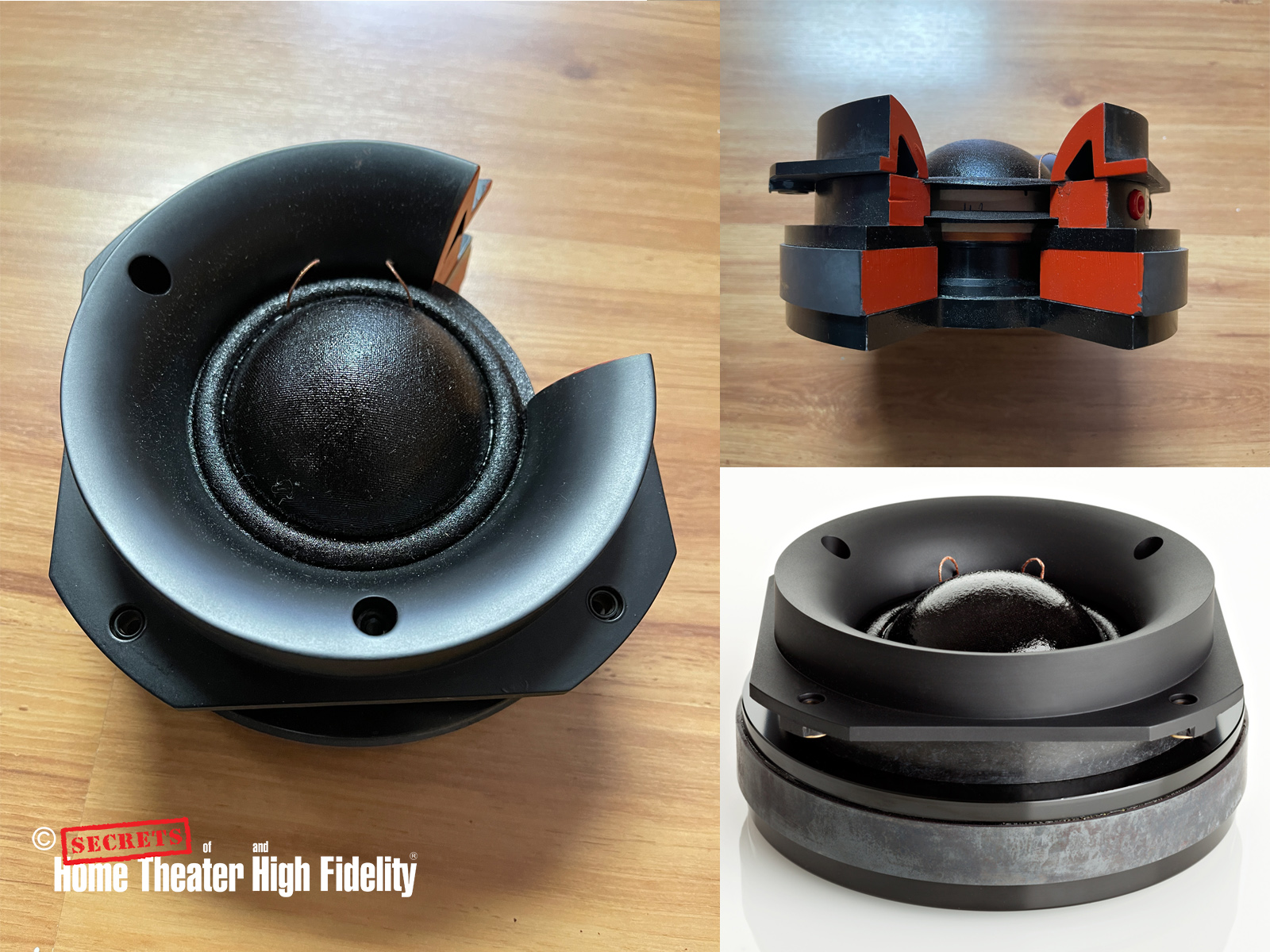

Finally, there is the 314mm (12”) underhung bass driver having a specially treated pulp cone set in a burly cast basket frame with an equally massive motor structure. The bass driver uses a large 3” voice coil which provides excellent power handling in an overall ultra-low distortion driver. A 3-inch port sits just below the bass driver.
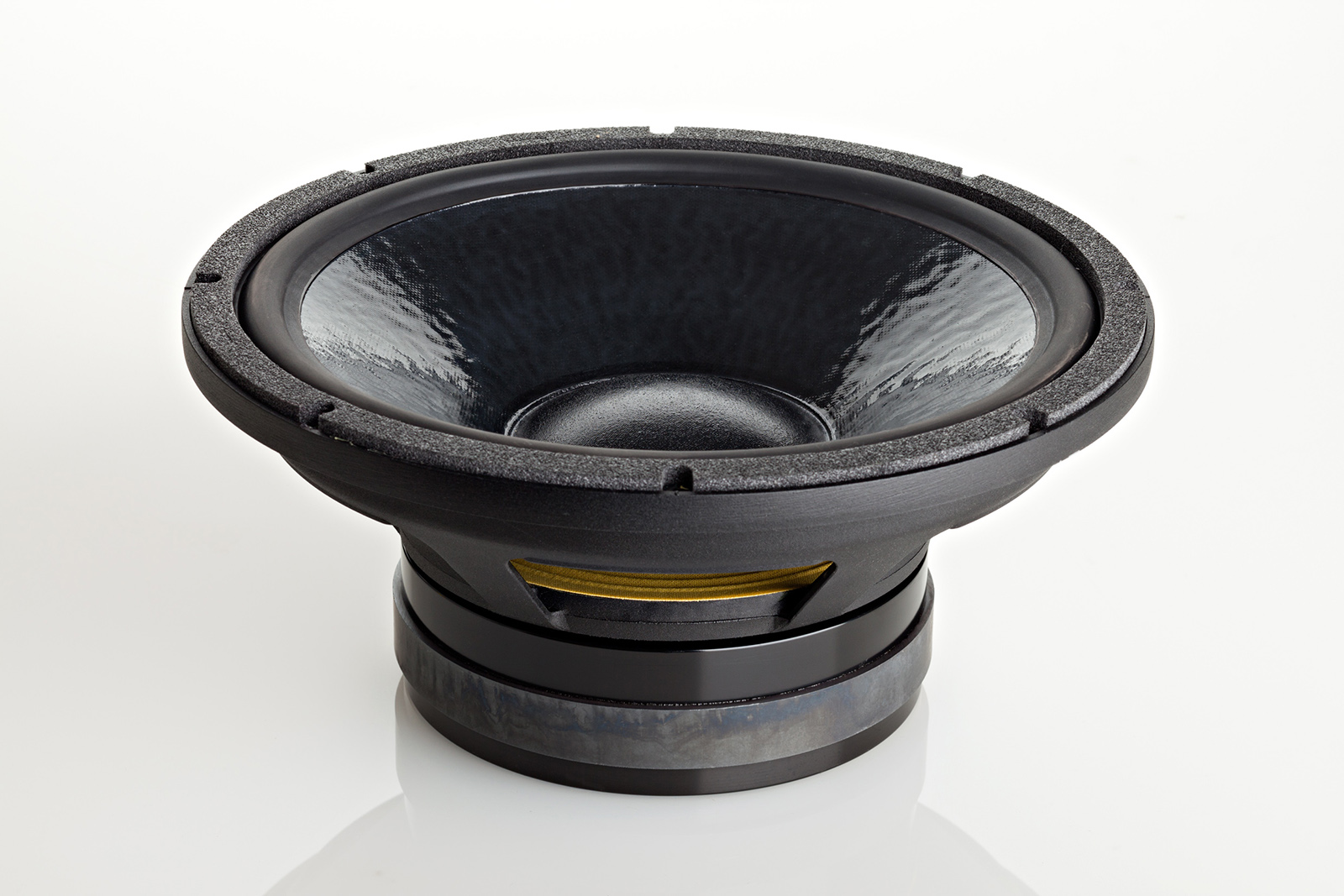
The enclosure starts with 3/4-inch MDF construction all around, with the front baffle being a thicker 1 and 1/4-inch build. The insides are extensively braced and are fitted with bitumastic damping pads to help quell any potential resonances.

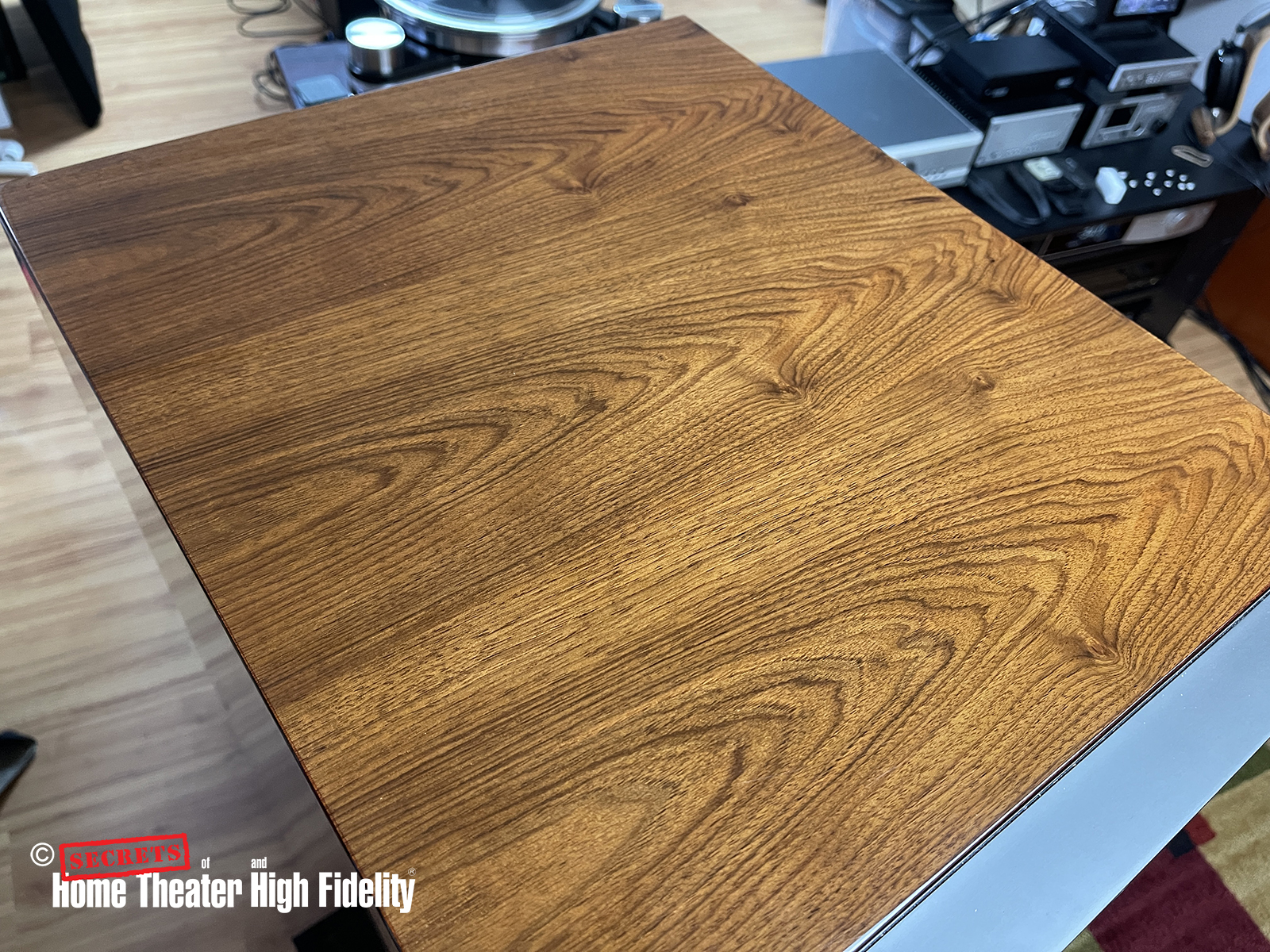
Several finish choices are available ranging from standard to premium veneer and paint options. The review samples were finished in gorgeous, richly figured, European Crown Cut Walnut veneer finish. A good rap with the knuckles in various spots elicits no hollowness to speak of.
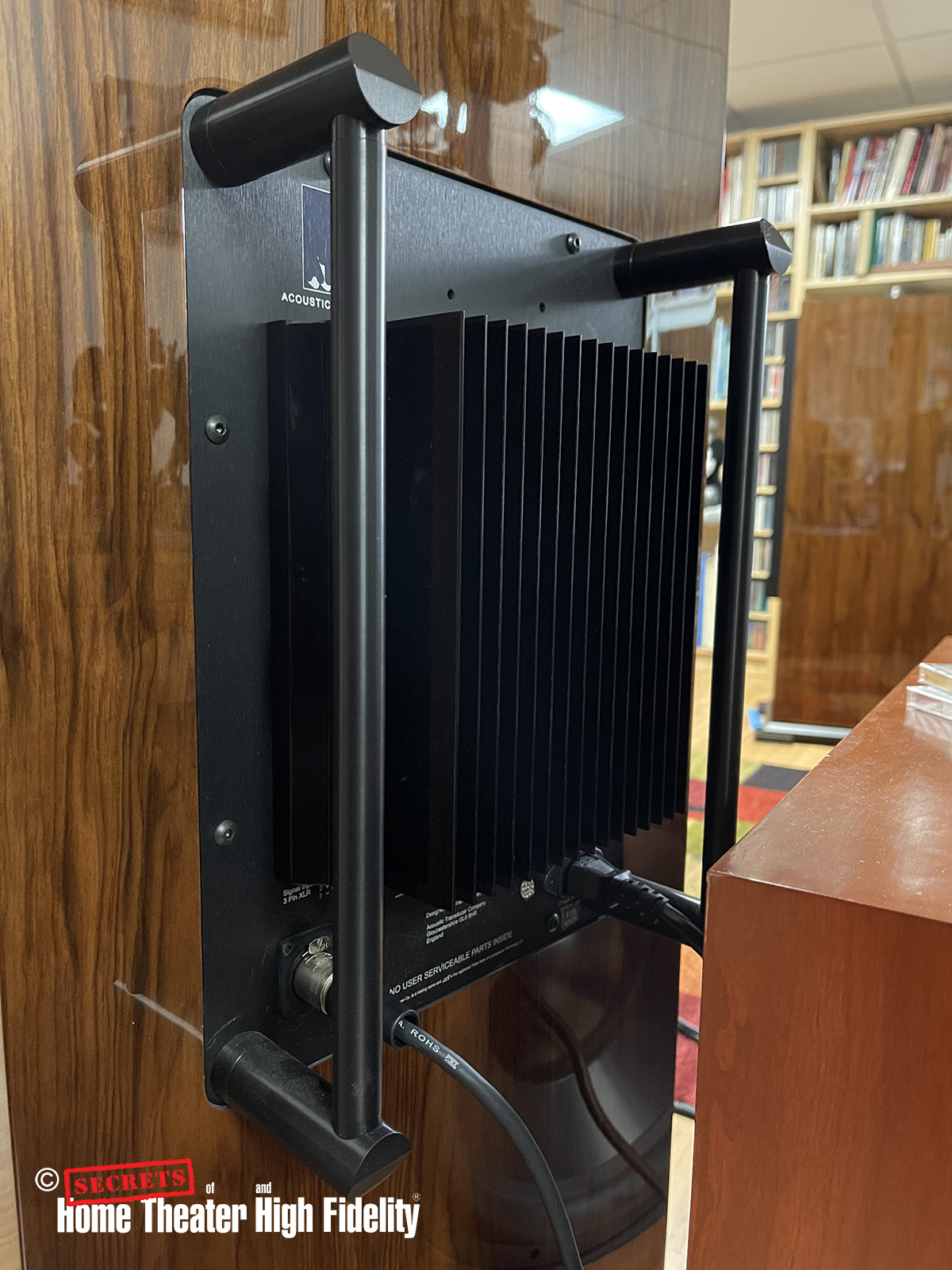
At the back of each cabinet is the electronics and amplification package. Consisting of a 200 wpc (watts-per-channel) amp for the bass driver, 100 wpc for the midrange, and 50 wpc for the tweeter. All the amplification is Class AB and the active dividing networks that manage it all are 4th-Order Linkwitz-Riley designs.
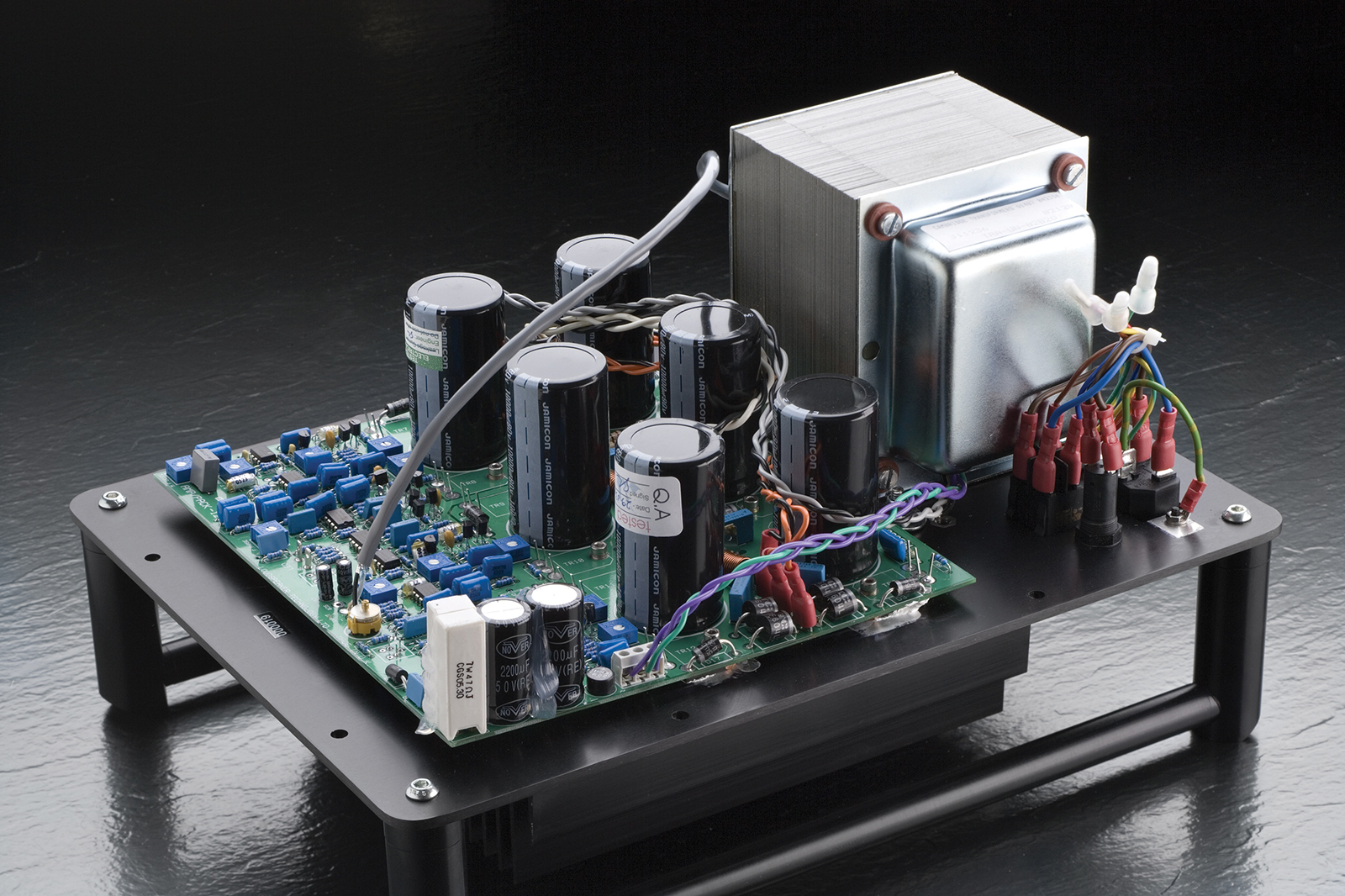
Connections are limited and simple. Hooking up your source or preamp is via a single XLR jack per speaker next to the power switch. There are also two adjustment pots, one for up to +6 dB of bass boost, and another for input sensitivity adjustment. It’s safe to say these are best left to professional installers or advanced users with measurement equipment.
With a weight of 150 Ibs. each, and the general dimensions of a mid-sized refrigerator, let’s say that hauling a pair of these babies down a flight of stairs into my studio was a bit of an adventure!

The ATC SCM100ASLT were set up in my studio two-channel listening space, positioned approximately 8.5 feet apart. ATC recommends that the offset tweeter and midrange drivers be set up toward the inside of the listening area as opposed to outside. After some experimenting, I settled on toeing the speakers in about 5 degrees to lock in the imaging just right. The listening position was approximately 10 feet back from the center point between the speakers.
Secrets Sponsor
Associated equipment used in the review included a Benchmark Media Systems HPA4 preamp, a matching DAC3 B DAC, an Anthem STR preamp, an OPPO BDP-105D Universal player, a GeerFab DBOB Breakout box, a VPI Avenger Direct turntable with Audio Technica ART20 moving coil cartridge, a PASS Labs XP25 phono preamp, and a DIY Raspberry Pi ROON endpoint. The cables were by Viablue and Benchmark/Mogami.
I also used four large (weight correct) EVP isolation feet (per speaker) from AV Room Service Ltd to isolate the ATCs and decouple them from the floor.
It’s easy to explain what the benefits of an active speaker are to someone. But it’s only in the actual hearing do the dots actually get connected and the “Ah-ha!” moment finally arrives. The ATC SCM100ASLT is an active speaker in the most classic sense and is probably one of the best ways to introduce yourself to what an active speaker can do. It’s not as complicated as an equivalent Meridian, Kii, or Dutch & Dutch speaker, but it will (in no uncertain terms) reveal just how much “life” a passive speaker gives up.

David Wilcox “The Collected Works 1977-1993”
A live-in-the-studio recording like David Wilcox’s “Hot, Hot, Papa” just springs to life on the ATCs. The speaker’s dynamic capabilities allow it to scavenge the most subtle details while still remaining linear and uncompressed at full attack. From the barely-there guitar amp buzz to Wilcox’s guitar screaming at full distorted chat, the ATCs nail these details in spades all while reproducing his slightly bassy vocals with superb tone and clarity. The way that the bass driver reproduces the kick drum was also noteworthy in that I could hear the details from the drum skin with each hit and not just the ubiquitous “thump” that we usually do.
When switching to something lower tempo like “Cheap Beer Joint”, the ATCs reproduce the ragtime style piano with authenticity and weight. And when the acoustic guitar solo comes in, the speaker’s inherent transparency allowed me to hear David Wilcox’s fingers moving across the fretboard and manipulating the neck strings. I could also easily make out the intensity changes in Wilcox’s plucking as he soloed.
And while details and transparency are lovely to experience, without solid imaging from a speaker, that seriously hampers the overall enjoyment. Luckily the SCM100ASLT throws out a nicely expansive image, to where listening to “Cheap Beer Joint” makes you feel like you are actually in an appropriate watering hole as elicited by the song’s title, experiencing David Wilcox’s performance.

Steely Dan “Northeast Corridor: Steely Dan Live, Geffen”
Switching over to live music, Northeast Corridor is probably among the best live recordings of Steely Dan’s music, even if it is missing the presence of the late Walter Becker. Jumping right in with “Kid Charlemagne”, the ATCs run with this track without missing a beat. The prevailing electric bass line is thick and punchy, and the speakers deliver it with plenty of drive. Jon Harrington’s guitar work on this track is exemplary as he channels all the sophisticated aggression that Larry Carlton imbued in the studio original. The ATCs beautifully relayed every single pick and slide exceptionally well. Donald Fagen’s voice, while older and smoother, still sang the song for all it was worth, and that dome midrange kept his vocals perfectly centered, slightly forward in space, and tonally correct.
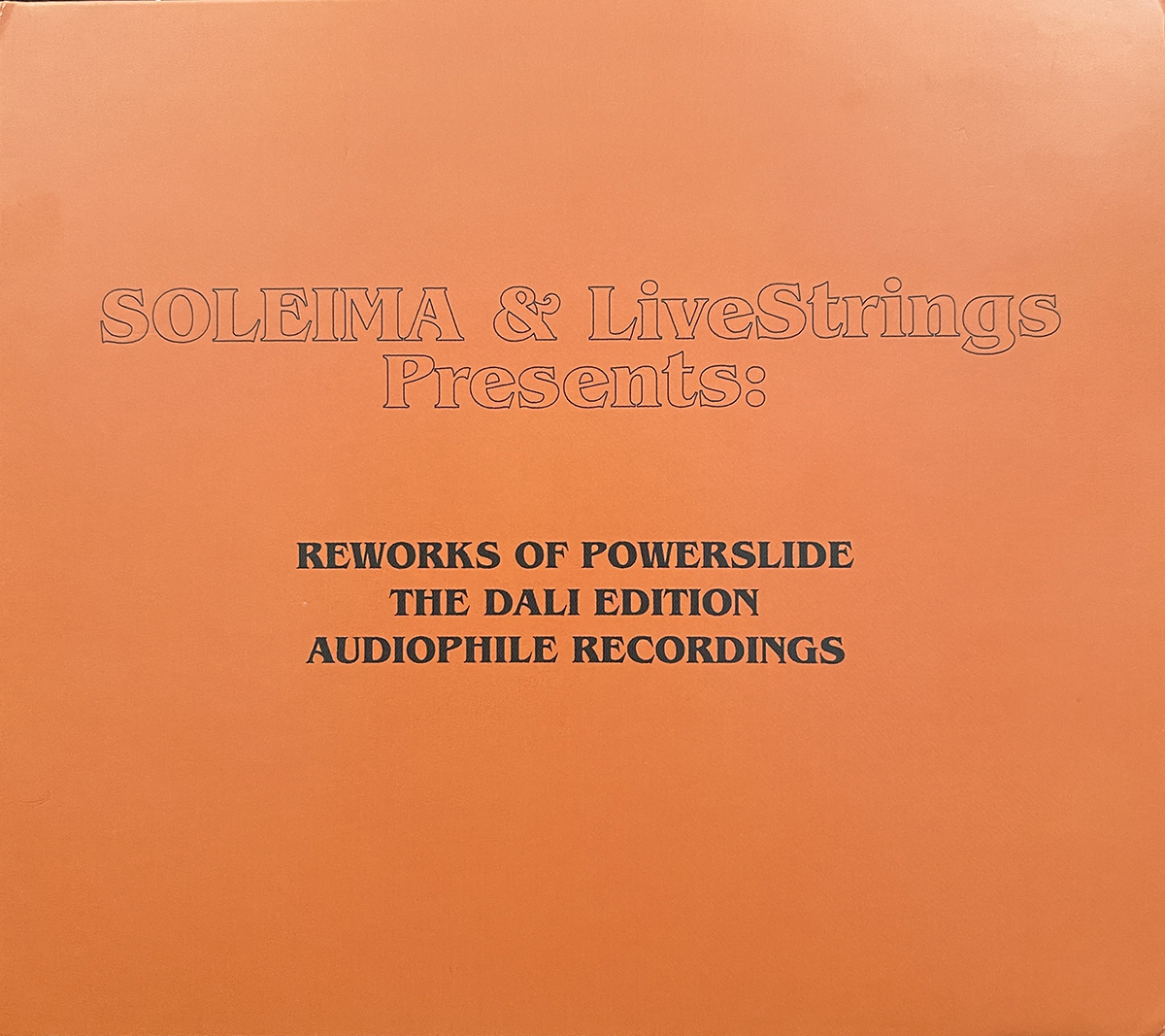
Soleima & LiveStrings Presents “Reworks of Powerslide – The DALI Edition-Audiophile Recordings”
This particular CD features the vocals of Danish alternative-pop singer Soleima combined with the Danish classical music ensemble, LiveStrings. What makes this fusion of styles genuinely interesting and appealing to me is that it explores the alternative-pop sound but uses the sounds and skill of classical instrument players to replicate what sounds would be typically created electronically in pop. On the track “Rather Go Blind” the ATCs blow the image up spectacularly with the sound of sweeping strings and woodwinds that is all but enveloping. Soleima’s wispy, ethereal vocals begin clearly centered in the mix, then they separate and expand during the chorus creating an interesting diffusive effect. The ATC’s dynamic resources and penchant for clarity keep everything going on in the mix sounding distinct and engaging. They certainly don’t have the hyperactive and slightly ruthless top end that I found in the Bowers & Wilkins 803 D4. On the track “Grind” there is some periodic slow cello playing happening and the ATC’s bass drivers bring out not just the depth and weight elicited by the bow swipes, but that almost distorted vibrating sound of the strings (because they have been hit so hard) comes through incredibly clearly. It’s quite uncanny to listen to.

Danish National Symphony Orchestra “Hollywood Gala”
Playing the “Superman March” is about as dynamic and bombastic a test as you could put to the ATC, and they basically just ate it up. This is a very well-recorded version of this theme song, and the dynamic changes are vast and lightning-quick. These SCM100ASLT reveal all the details and scope of the various instruments and their sections. The bass drum hits were intense, while the horns and brass were crystal-clear and never grating. Even turning up the volume (to just shy of silly levels) didn’t cause the ATCs to protest in the least. If anything, it made me want to stand up and play “Air Conductor” to this massive orchestra that was now playing before me. These ATCs are a big, beautiful, delightful listen that doesn’t just put you in the middle of the action, they just about hard-wire you into the music. And as far as I am concerned, that’s part of the magic of active speakers. Yes, some can do all sorts of snazzy room compensations and other sorts of processing wizardry. But at their core, straightforward active loudspeakers like these ATCs get you exponentially closer to what was laid down in the recording studio than any passive speaker ever can ever hope to, no matter how polished its crossover design is or what electronics are tied to it. They are absolute beasts!
Measurements by Carlo Lo Raso, analysis by Carlo Lo Raso and David A. Rich.
Bench tests were performed with a Cross Spectrum Labs calibrated UMIK-2 microphone connected to my computer workstation using Room EQ Wizard acoustic measurement software. On and off-axis measurements were taken with the microphone at 1 meter from the center point of the dome midrange driver as the 0-degree reference point. Unlike measurements taken outdoors or in an anechoic chamber that measure a speaker in isolation (and assess straight-line engineering and tuning), in-room measurements give a sense of how a speaker behaves in the actual environment that it’s used. Both types of measurements are valuable (make no mistake, a properly designed speaker in an anechoic environment will hold up much better in an average listening space), I just find in-room measurements interesting as they help shed light on what I am hearing and why. That and I have neither a chamber nor a Klipple at my disposal.

This in-room measurement is an 18-point spatial average. A 9-point measurement was made for the right speaker and then repeated for the left speaker. Averaging both speakers is an approach others have been using and publishing. Using data from both speakers reduces the modal response of the room by averaging the differences in the response of the two speakers from room asymmetries. The technique cannot eliminate them however and so the response below 300Hz remains room dominated. The results show the ATC SCM 100ASLT has a consistent average response throughout its in-room bandwidth. Between 1.5 kHz and 5 kHz, there is a very gentle almost “smiley-face” dip in the response that is seen in several British loudspeakers. This dip is shallower than most that I have come across and it didn’t seem to bother me at all during listening. “The tweeter shows a drop of about 3-4dB in response past 11 kHz. We also see a bit of a trough in the “power band” between 200 Hz and 400 Hz. Below 250 Hz, the response increasingly becomes more room dominated. There are a couple of additional response dips at both 150 and 43 Hz. In this room, the bass steeply rolls off below 28 Hz. I’ve only been able to overcome this bass limitation by using a pair of very large, dual-driver subwoofers. But if these ATC speakers had been set up in my treated home theater room, I could easily see the response extending down to 20Hz, factoring in room gain. However, none of these dips looks severe enough that they can’t be compensated for with room correction such as ARC or DIRAC.
David Rich notes: ignoring the peak at 1kHz the speaker is +/-2dB 350 Hz -12 kHz to a target curve (not to a flat line). An important parameter I am mentioning for the first time is the average slope of the target curve. For the ATC this is 0.5dB / octave slope 300 Hz – 20 kHz within the +/-2dB span.
For comparison, the Revel F228BE fits in the +/- 1.3dB 300 Hz -15 kHz target curve. The F228BE has a steeper 0.8dB / octave slope target in the 300 Hz-15 kHz band. This 0.8dB octave slope approximates the so-called “Harman Curve” in this frequency band. The Perlisten S7t is +/- 0.8dB 350 Hz – 13 kHz to a target but it has a 0.6dB / octave slope. Comparing the Revel to Perlisten one would expect they would sound similar given the size of the strip the response sits in, but the slope makes a big difference in the subjective response. The Perlisten S7t would be seen as more forward and analytical.
0.6dB/octave is typical of the Genelec studio monitor. Since the origin of the ATC products are studio monitors it is not surprising to see an even shallower slope of 0.5dB. Subjectively the slope will dominate if the response deviation to the target is not large, thus some will think the speaker sounds forward and analytic even with the depression in the 1.7 kHz – 3.8 kHz area. For others, the dip may compensate by making the speaker less aggressive. Carlo’s subjective review appears to suggest he heard it this way.
Floyd Toole has often spoken of the circle of confusion. The monitor in the studio is different from a home speaker. We can see monitoring on an ATC will result in a recording that does not sound correct on the Revel. The match to the Perlisten would be closer given the shallower slope of the target although if the mix engineer subjectively applies EQ peak in the 3 kHz band the result will be a recording that is bright on the Perlisten. The issue lies both in the recording studio and the home. All speakers should have a matching target curve with amplitude deviation held to a minimum. Room EQ approximates this but is at this point useless since no standard target curve has been agreed to. I also note a real target curve of 20 Hz – 20 kHz may be linear at the band extremes below 200 Hz and above 10 kHz.
The B&W 803 D4 we tested has a 0.6dB / octave slope target like a studio monitor but in a +/- 2.9dB span 300 Hz -20 kHz. The frequency response is up 3dB 1.2 kHz – 11 kHz. Why in the world a recording engineer would pick such a bright speaker as a monitor I have no idea, but it is often used. If the engineer applies EQ (a negative shelf filter at around 1 kHz) to the mix to compensate for the huge high end of the 803 D4. With that negative shelf filter, the recording is going to sound wrong at home unless another B&W product is used as the playback speaker. If, for example, you are using a pair of Perlisten S7t at home the recording will sound as dull as dishwater (I am using the Perlisten S7t as an example because it has a studio monitor-like target response and little amplitude deviation around the target). What I am saying applies to the Perlisten S7t only, for which I have real, in-room data, at Carlo’s place as I do the B&W 803 D4 and Revel F228BE with their steeper target curve.
Needless to say, the recording made using the ATC will be dramatically different. Paradoxically the recording done with the B&W 803 D4 sounds very dull, but the recording done with the ATC might have a push in the presence range if the engineers put in a peaking filter to remove a dip in that range during the subjective mix (please understand I am not talking about doing room EQ, before the mix, to remove the 1 kHz – 3 kHz dip). We are hearing the inverse of the speaker’s response in our homes.
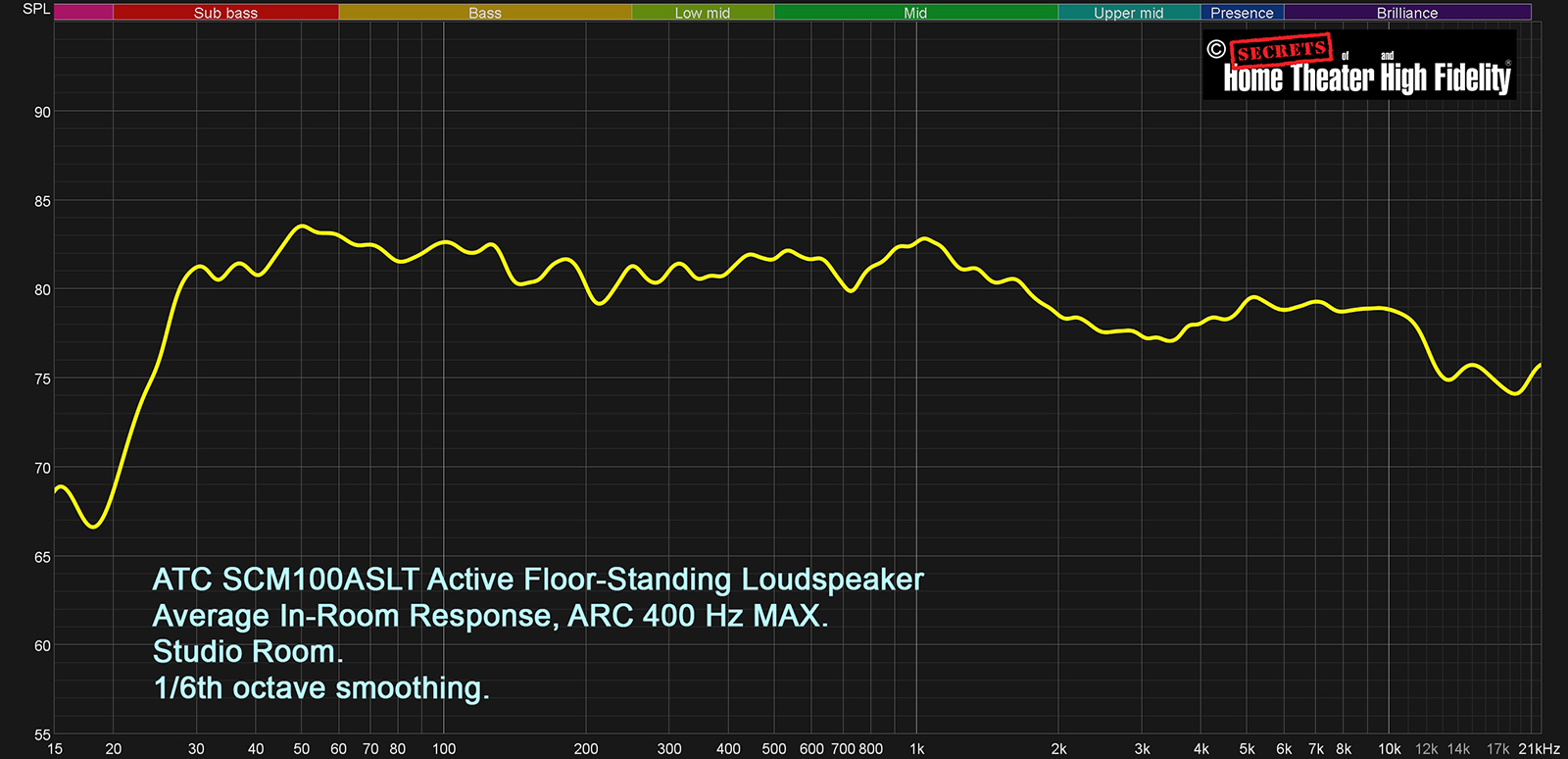
And sure enough, with the judicious use of Anthem Room Correction, limited to 400 Hz and below, I was able to smooth out that lower-mid, bass, and sub-bass region nicely. I left everything from 400 Hz and above alone as I wanted to preserve the natural voicing of the speaker and correct only the most obvious room-induced issues. This was the arrangement I used for much of my subjective listening analysis.

This is a plot of the NRC listening window for the ATC SCM100ASLT scaled from 300 Hz on up which is averaged from the following measurements: 0-degree on-axis, +/-15 degrees vertical, and +/-15 degrees horizontal. This is the portion of the frequency range that is dominated by the speaker (response below 300 Hz tends to be dominated by the room and can vary greatly).
David Rich notes: ATC asked us to measure on the midrange axis which is 32 inches above the floor. We typically measure on the tweeter axis which in most floor-mounted speakers is at a seated ear height of 39 inches.
Note using our 1-meter distance to the speaker, which is far back as we can go without just getting room reflections, a large speaker like the ATC may not be representative of what it does in the anechoic chamber.
With the microphone 32 inches from the floor, we had more floor bounce. Also note, unlike a bookshelf speaker, we could not raise the speaker above the floor which further reduces the floor bounce.
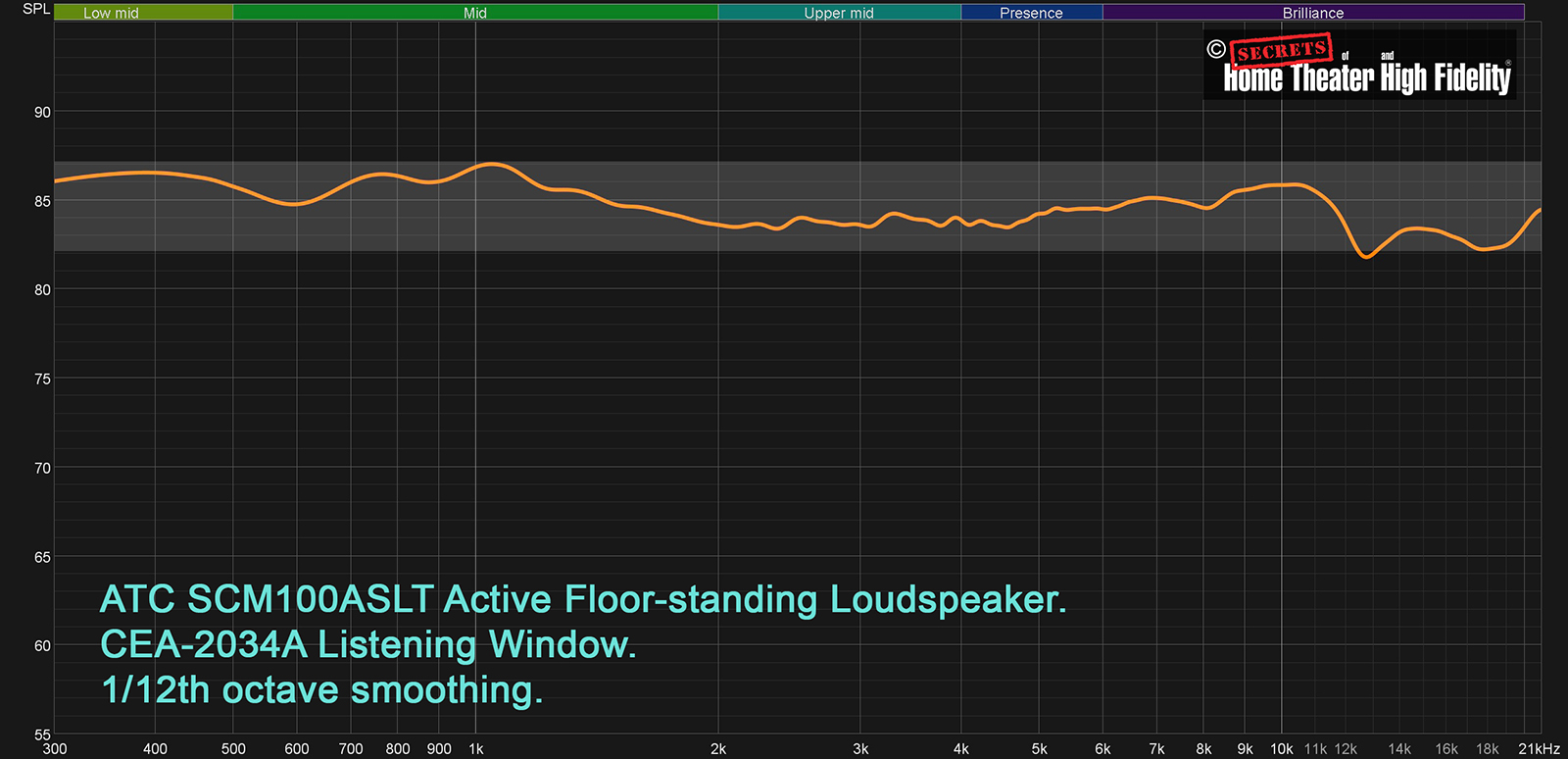
This is a plot of the CEA-2034A listening window for the ATC SCM100ASLT scaled from 300 Hz on up which is averaged from the following measurements: 0 degrees on-axis, +/-10-degrees vertical, +/-10 degrees, and +/-20 degrees horizontal. This is the portion of the frequency range that is dominated by the speaker (response below 300 Hz tends to be dominated by the room and can vary greatly).
David Rich notes: The CEA-2034A listening window correlates very closely to the NRC window.
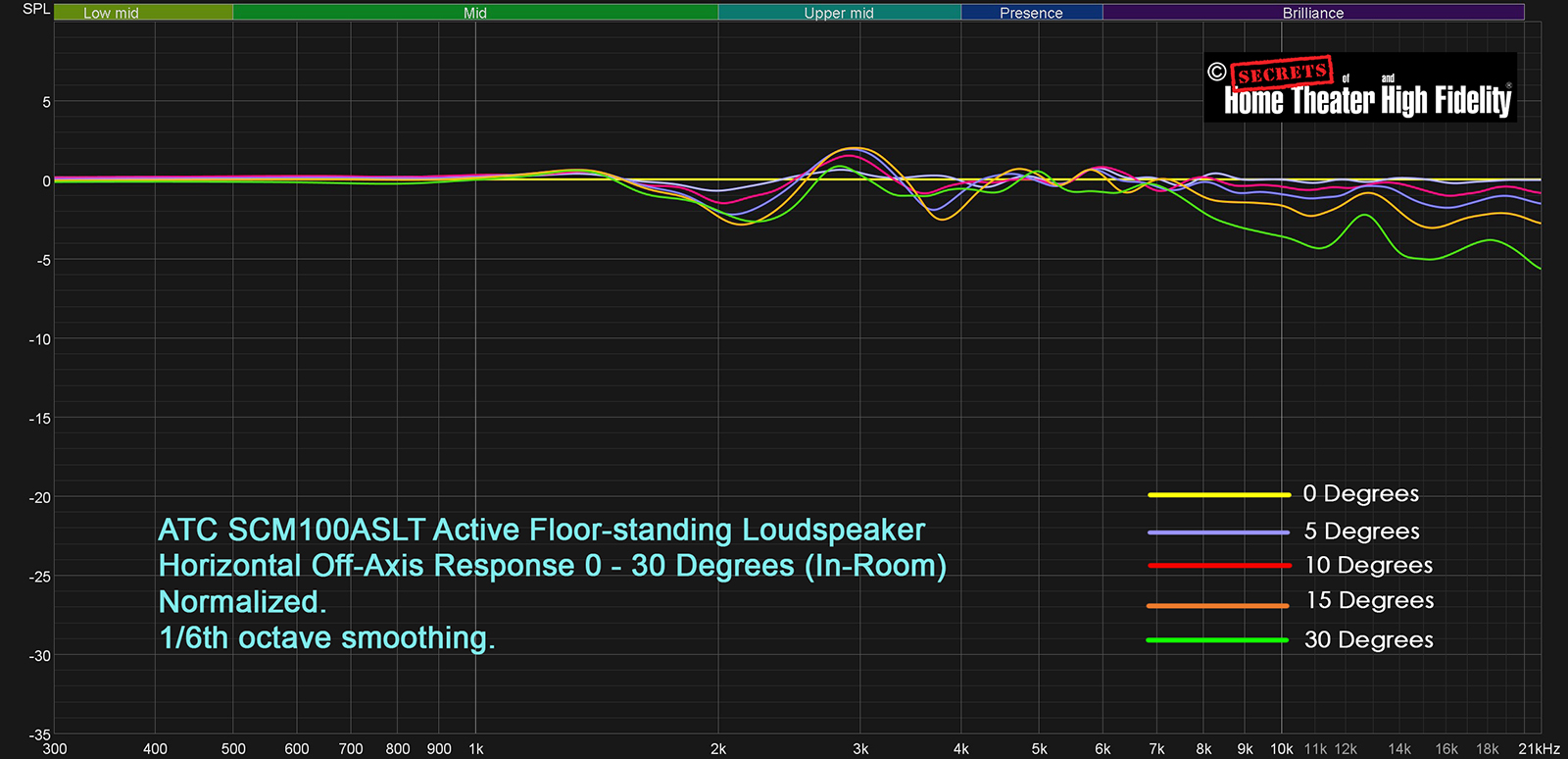
Above are the horizontal radiation curves of the ATC SCM100ASLT from 0 to 30 degrees, normalized and scaled from 300 Hz on up, measured in-room.
David Rich notes: This is a big speaker with a wide baffle sitting on the floor. The impulse response needed a very small window to produce data with any validity which is why you see no curve movement below 1 kHz. Still, we are picking up the midrange/tweeter crossover at 3.5 kHz. This is an active 4th order LR. Since it is active, using small IC filters, we can assume the acoustic response is 4th-order LR. No peaking should occur with an LR filter (any even order LR not just 4th). What we are seeing at 3 kHz is likely diffraction to the baffle although caveats about the low microphone distance to the floor and the 1-meter distance to the microphone could create the allusion that some diffraction is present that would not show up in an anechoic chamber.
We are not showing the wider-angle plot of 45 degrees to 90 degrees. It showed much larger changes than we expected. We had run out of the ability to measure the speaker inside the house. Even outside the house, we would have had to get the speaker off the grass. Getting this 150-pound speaker with a huge footprint off the ground by a couple of feet is just impossible.
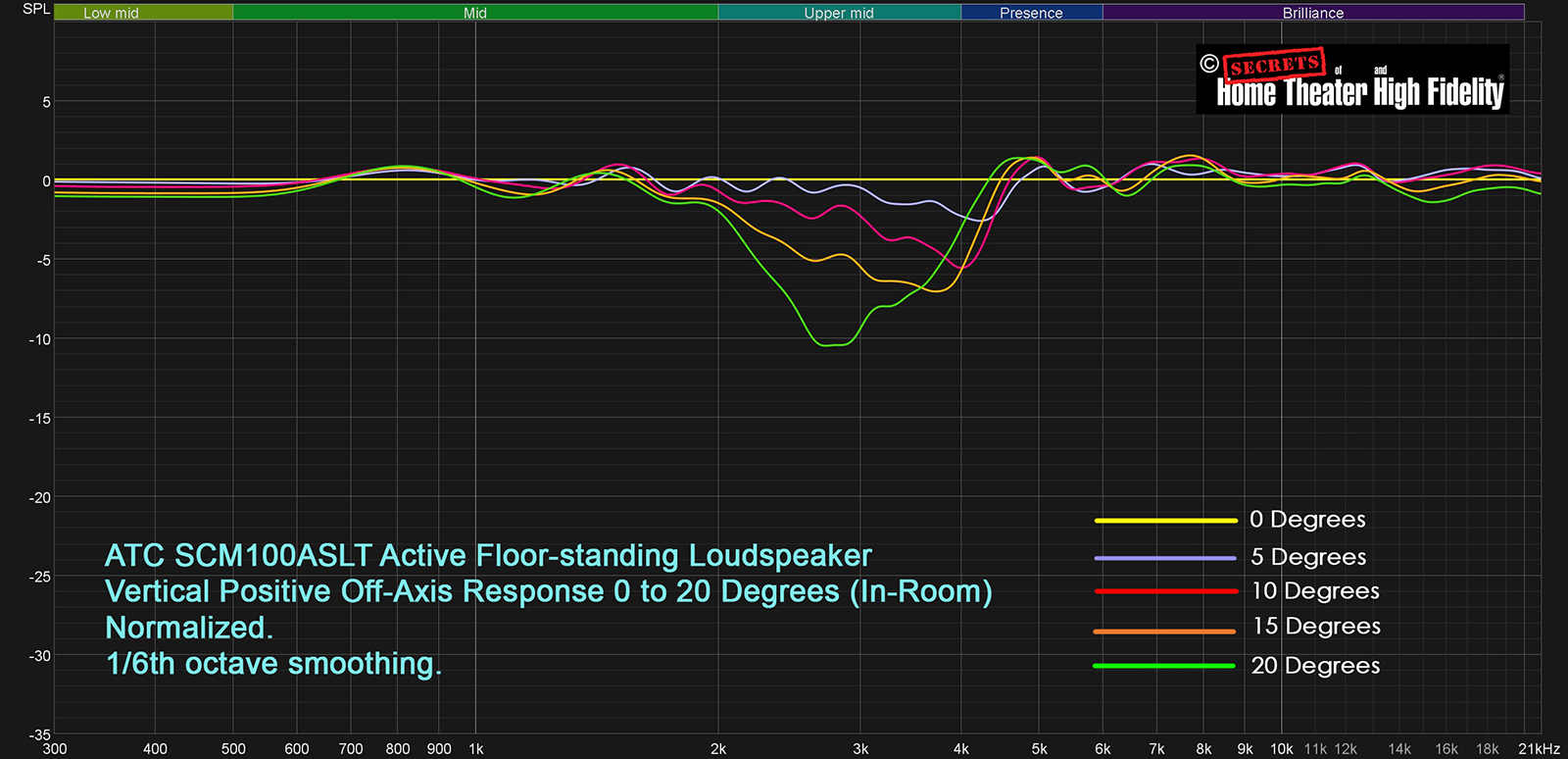
Moving to the vertical radiation pattern for positive angles, we see the plots for 0 to +20 degrees, normalized and scaled from 300 Hz on up, measured in-room.
David Rich notes: Recall the mic is 32 inches from the ground. Your ears are 39 inches seated. Thus, the mic was 10 degrees negative to the ear.
This graph thus needs to be offset by 10 degrees. Relative to the seated ear it is +/- 10 degrees.
We decided not to show the negative angles. These would, with the offset, have been -15 degrees to -30 degrees.
At what would have been -15 degrees the mic would have been 29 inches from the floor. The impulse data showed an increasingly large floor bounce which was becoming impossible to window out.
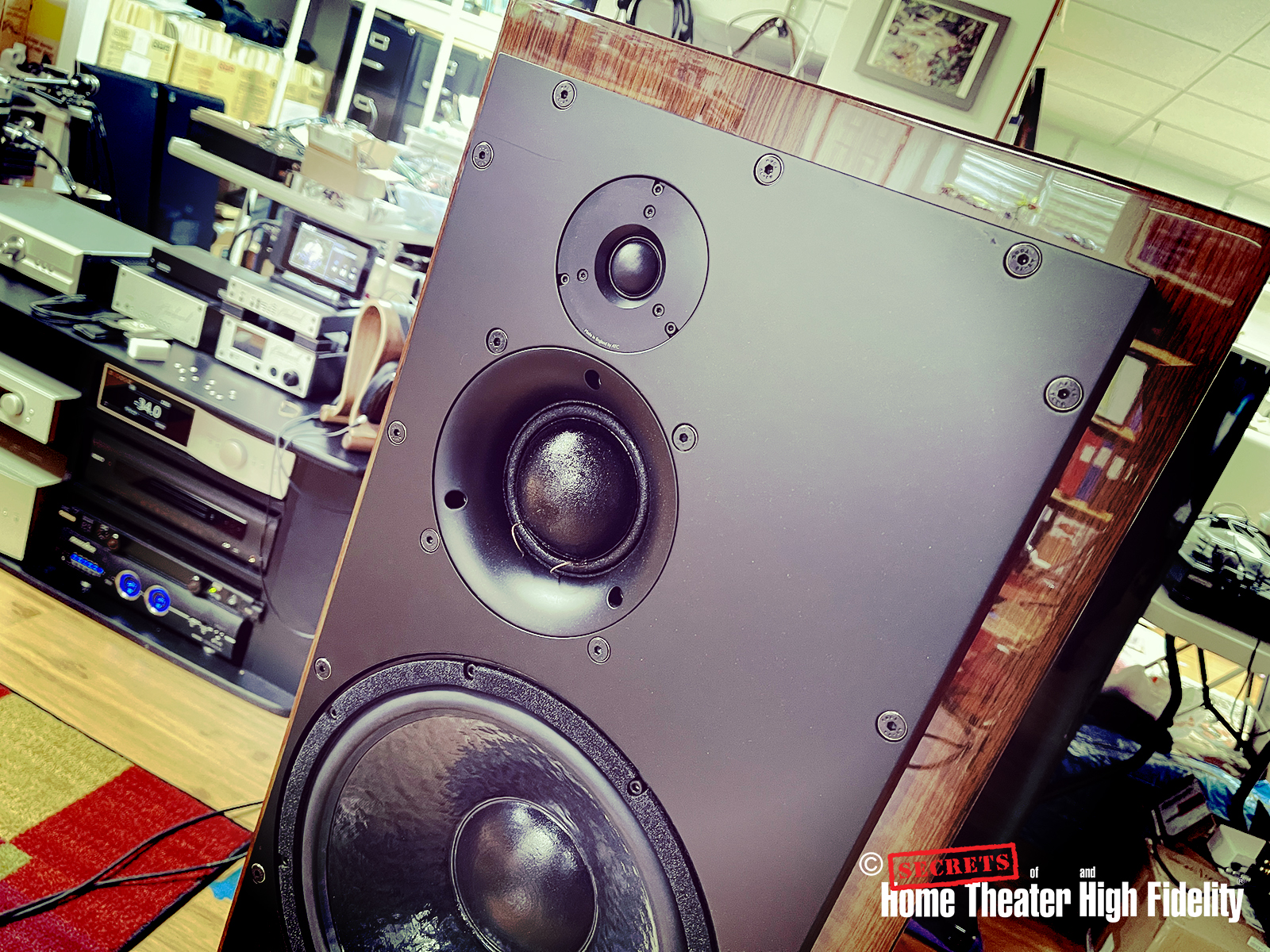
The ATC SCM100ASLT is an active British studio monitor in the most classic sense. Its transparency, range, and dynamic capabilities conspire to bring some of that large-scale in-studio magic to your listening room.
- Powerful, accurate sound.
- Beautifully finished, and solid cabinets.
- Extended dynamics galore.
- Perhaps some removable wheels to help with positioning during setup.
The ATC SCM100ASLT is essentially a classic active studio monitor, dressed up in the most sophisticated tailored suit. I am constantly flummoxed when I remember that they are not the largest speakers in ATC’s active range, as they are huge. They very much remind me, if I am drawing automotive parallels, to a Bentley Continental GT. A large, expensive, high-performance, well-appointed, bespoke, British product that gets you closer to the desired experience than many lesser competitors would.
As simply a pair of loudspeakers to enjoy my music on, they are exceedingly enjoyable. Neither overly ruthless nor blandly flat, they have a very agreeable sound signature that particularly does well with vocals and most instruments. I think ATC’s late founder, Billy Woodman, would be especially pleased with how these speakers render a piano.
Beyond that though, it’s as if they have an almost bottomless lung capacity at their disposal. They can be pushed to really absurd levels and remain eerily clean-sounding and totally composed, almost daring you to push them further. And for such big speakers, they are incredibly light on their feet with an almost instant attack to the music throughout its entire operating band. It especially drives a stake in the heart of that long-in-the-tooth old chestnut “big driver equals slow bass” nonsense.
At almost $40K per pair, there are plenty of passive speakers that try to compete with these active ATCs. Some will legitimately get you close.
But for me, the ATC SCM100ASLT, don’t just look and sound exceptional, and have the studio pedigree, but they have a personality and character that makes them utterly unique and adds to the whole pride of ownership. They are special, and well worth auditioning if you have the opportunity. Oh, and when you do don’t forget to bring some Van Halen along to the demo and politely ask the dealer to turn it up.
You won’t regret it!


